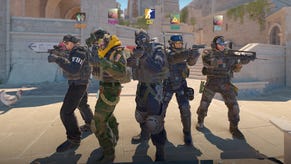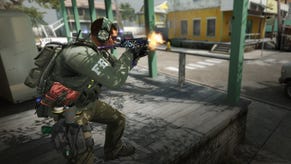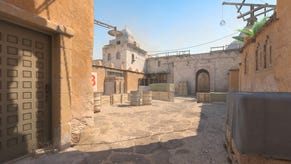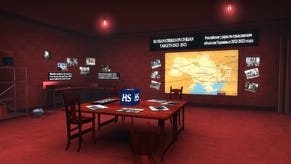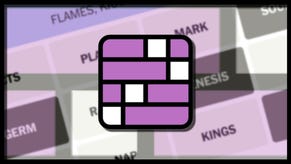CS:GO - Best Deathmatch maps 2018
How to work the Deathmatch map options to improve your performance.
Whether you’re new to the CS:GO scene or are feeling burnt out from the pressures of Competitive matchmaking, jumping into Deathmatch can be a fun way to decompress.
Often regarded as one of the more casual ways to train, Deathmatch is a way to improve your aim and reflexes.
While you should definitely pursue other methods for brushing up on positioning and general game sense, Deathmatch is a fast-paced mode with a competitive edge that will encourage you improve every time.
Check out the following maps for the best Deathmatch experiences available in CS:GO. First though we'll walk you through the process of finding a quality map to play on safely.
How to find an active Deathmatch Server:
Launch CS:GO and click ‘Play CS:GO’.
In the top-left dropdown menu select ‘Community Server Browser’. Type ‘Deathmatch’ in the tags section at the bottom and the list will filter all active community deathmatch servers.
Locate the one that you’d like to join and click ‘Connect’.
Be sure to pay close attention to the number of players in the server. You can avoid joining empty servers by clicking the Players tab at the top to list the most populated servers at the top.
Avoid Getting Burnt!
When connecting to various community servers its very easy to fall victim to scammers who may try to steal your account and inventory.
After following the above instructions on how to connect to a community server, ensure that it's protected by Valve’s Anti-Cheat technology, signified by a small green-grey shield on the left side of the list. Alternatively, if you’re choosing to connect to a server via an external website, make sure that it's a reputable one.
Some servers also require you to download certain files including skins, maps and models. You can block file downloads entirely using this command: ‘cl_downloadfilter’. Bear in mind that some servers depend on these file downloads for the server to work as intended though.
This article contains additional reporting by Emma Matthews.
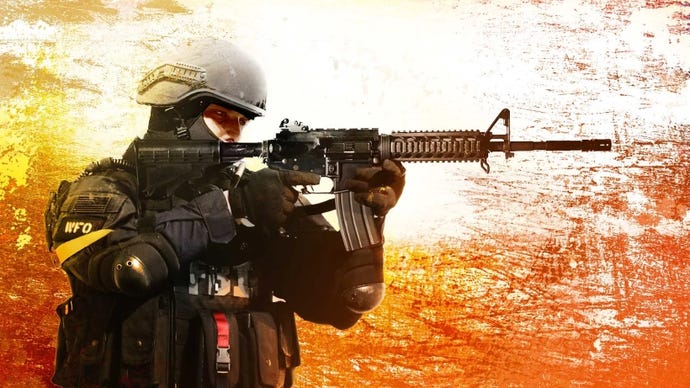
CS:GO Best Deathmatch Maps: Free For All (FFA)
Free for All (FFA) Deathmatch servers are the primary reason why most people go out of their way to join community servers.
Unlike Valve’s standard Deathmatch servers which put you on a team which instantly halves the number of enemies you have to shoot at, most of the community Deathmatch servers you’ll find will have FFA enabled.
This gives you twice the amount of targets to kill in a match, making it significantly more efficient for training as you won’t have to spend anywhere near as long hunting for players.
A lot of community servers also have the added benefit of being 128-tick instead of 64-tick. This means that the server updates twice as often as a 64-tick server, resulting in a much smoother experience for players. Think of it as a similar experience as going from a 60Hz monitor to a 120Hz monitor; once you are used to the game being much smoother, you won’t want to go back.
If you are looking to practice against real opponents, FFA is the best way to do so. This mode may be off-putting to new players who are trying to ease their way into CS:GO, but for players who well-versed with the game, there’s no reason not to give this a try.
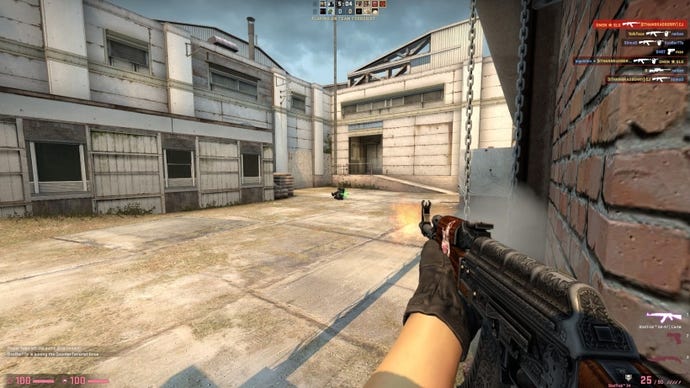
CS:GO Best Deathmatch Maps: Pistol Only
In Competitive games, the first round of each half - also known as the pistol rounds - are integral in setting up your team for the rounds that follow. Win a pistol round and you’ll have a healthy economy that gives you a decent advantage in the next round. Lose a pistol round and you’ll be at a clear disadvantage.
As a result, you should ensure that you’re well acquainted with each of the pistols on offer in CS:GO, and where better to practice those disgusting Deagle one-taps than on a Pistol Only server?
The majority of community Deathmatch servers are set on popular maps that you’d see in the Active Duty map pool such as Cache, Mirage and Inferno. It goes without saying that you’ll see a lot of Dust II as a result of its popularity with the community too.
Pistol Only Deathmatches are an excellent way to coach yourself into taking sensible and accurate shots. With the removal of assault rifles and SMGs, spraying is not an option here so you’ll have to focus on aiming at opponents’ heads.
In some cases, kevlar and helmets may be enabled, making single headshots impossible with certain pistols, although the host can change this game condition and switch it off.
Many Pistol Only Deathmatch servers will automatically replenish your ammo when you get a kill, which can save you from wasting time by reloading yourself. Many servers will not reset your health between kills to make the experience more challenging.
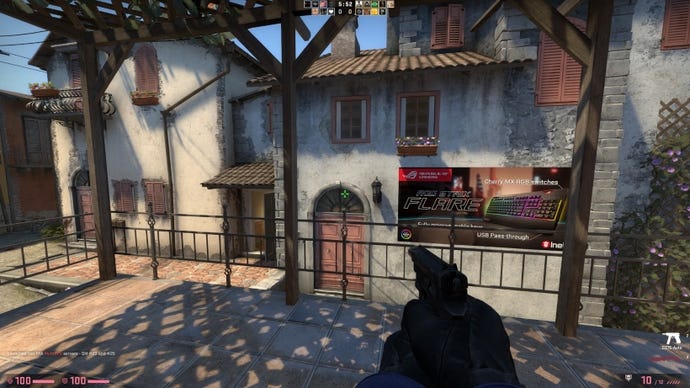
More popular CS:GO guides:
- 1. Guide - CS:GO - Guide 2018
- 2. Training Maps - CS:GO - Best training maps
- 3. Deathmatch Maps - CS:GO - Best Deathmatch maps
- 4. Improve Aim - CS:GO - How to improve your aim
- 5. Best Weapons - CS:GO - Best weapons 2018
CS:GO Best Deathmatch Maps: Limited AWP
There’s nothing worse than joining a Deathmatch server hoping to improve your aim with a specific weapon, only to be sniped by an AWP a few seconds after every respawn. Limited AWP Deathmatch servers impose a cap on the number of AWPs each team is allowed to use at any given time (usually two per team).
If you happen to join the server first, you can select the AWP, however it will only last for a certain amount of time before it becomes available for the rest of the team to use. Deathmatch is supposed to be fast and somewhat frantic - all the things that AWPs aren’t! You aren’t supposed to bring a sniper rifle to a gun fight, it just isn’t fair.
If you’re looking for a safe haven to enjoy the thrills of Deathmatch away from Valve’s AWP-saturated servers, search for these in the community servers list.
With less AWPs in play, you’re way less likely to experience the levels of sniper-directed salt from other players, meaning that you can focus on improving your aim and reflexes against other players, using assault rifles and pistols.

CS:GO Best Deathmatch Maps: Headshot Only
Practicing advanced techniques like flick-shots can be highly effective against bots, but it will never teach you how to track actual people. Headshot Only servers are perfect at helping you perform both of these tasks with ease.
As the name suggests, these servers negate any damage done to players that has not been the result of a headshot. There are also a number of servers that combine both the Pistol Only mode with Headshot Only, giving you the ability to practice your pistol aim with confidence.
Many people have argued that Headshot Only servers can do more damage to players if used incorrectly, which is technically true. The argument goes that Headshot Only servers encourage a certain playstyle (aiming for the head only, being forced to use specific guns) whereas great CS:GO players are much more versatile.
Practising your aim in Headshot Only servers can show you exactly how good your aim is, however, there are plenty of times in CS:GO where you’ll need to spray/burst-fire depending on the weapon you are holding.
As with all types of training in CS:GO, be sure to spend equal amounts of time on all aspects of your game.
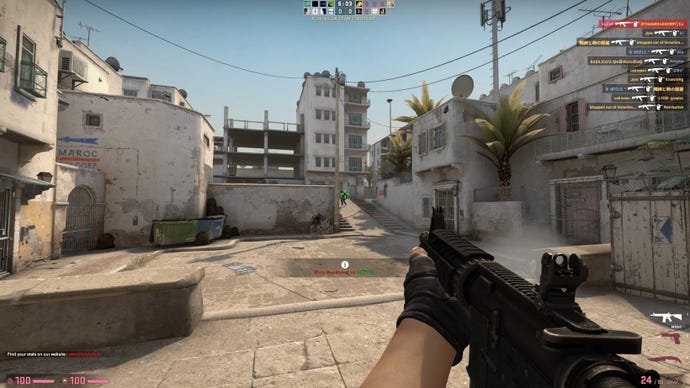
CS:GO Best Deathmatch Maps: Valve's Standard Deathmatch
While the other Deathmatch modes that we’ve listed provide players with challenging conditions that set each of them apart, it's also important to remember that Valve’s standard deathmatch mode is also perfectly viable. Valve may only support 64 tick servers, but that is by no means a deal-breaker if you’re looking to casually work on your aim and reflex training.
By playing on Valve’s own Deathmatch servers, you avoid a lot of the hassle that you get when trying to find a good community server. These issues can range from getting kicked for players with reserved slots, having to download numerous sounds/packages you don’t want, and having to deal with advertisements as soon as you load into the server.
Thanks to Vave’s inclusion of the Deathmatch mode into their Official Matchmaking category though, players can quickly hop into one of four groups: Defusal Group Sigma and Delta which turn existing popular CS:GO maps into Deathmatch arenas, the Hostage group for older, hostage-orientated maps and a separate group dedicated to Dust II only.
With a few maps in each group (bar the Dust II group), you’ll have a high chance of playing on the map that you want. Votes held at the end of each Deathmatch will also give players the opportunity to pick the next one in the rotation.
We’ve previously mentioned Deathmatch servers that limit which weapons can be used, with most community servers conforming to the FFA Deathmatch model, however this is where Valve’s differs.
Similarly to Casual matchmaking, players will have to pick either Terrorist or Counter Terrorist sides, meaning that they’ll only be playing against roughly half of the map’s population, while also being restricted to the weapons available on each side. So, if you’re hoping to improve with a specific weapon, this is a great place to practice.
The leaderboard is an ideal way to track how well you’re doing, and with the inclusion of highlighted bonus weapons (where you can switch to a weapon for a short period of time to earn more points per kill) every few minutes, this mode can feel quite competitive.




